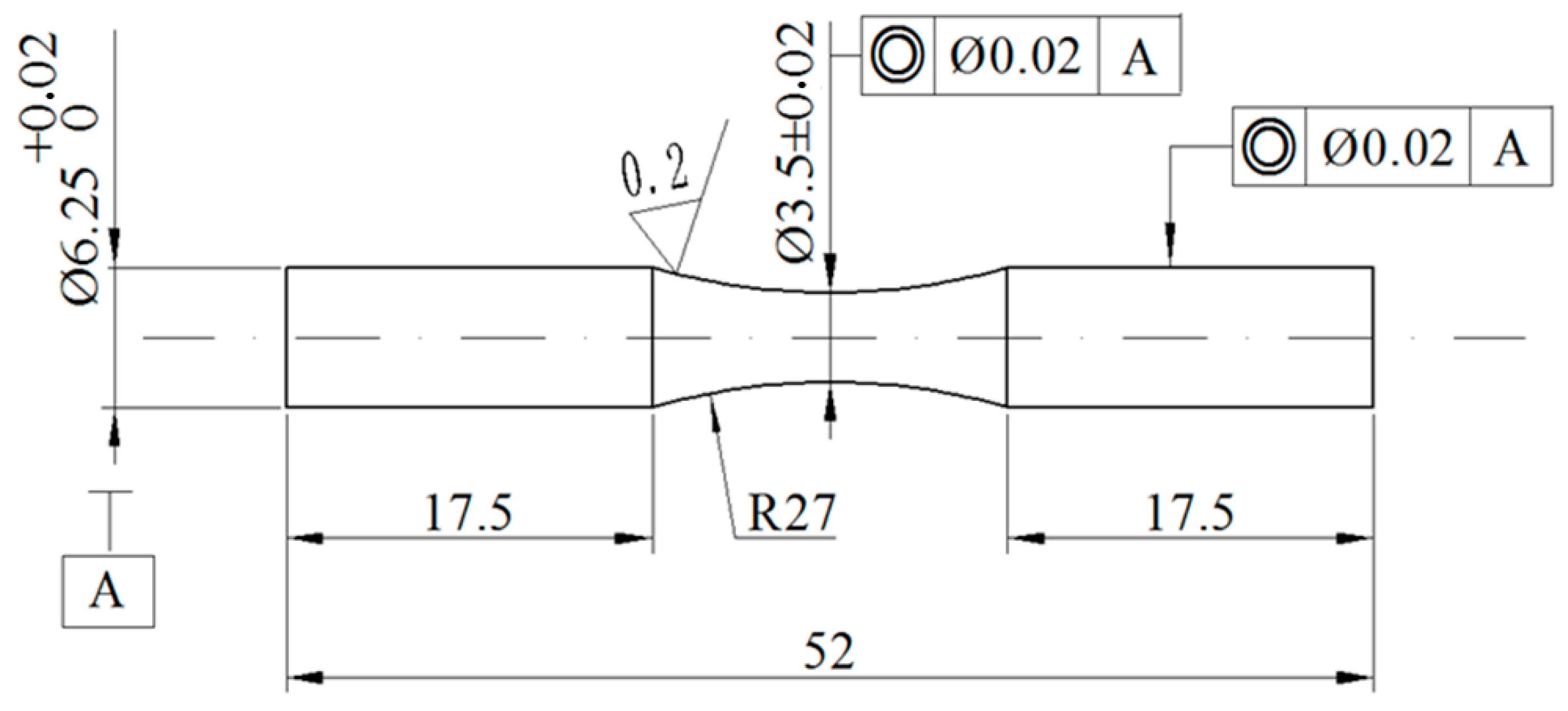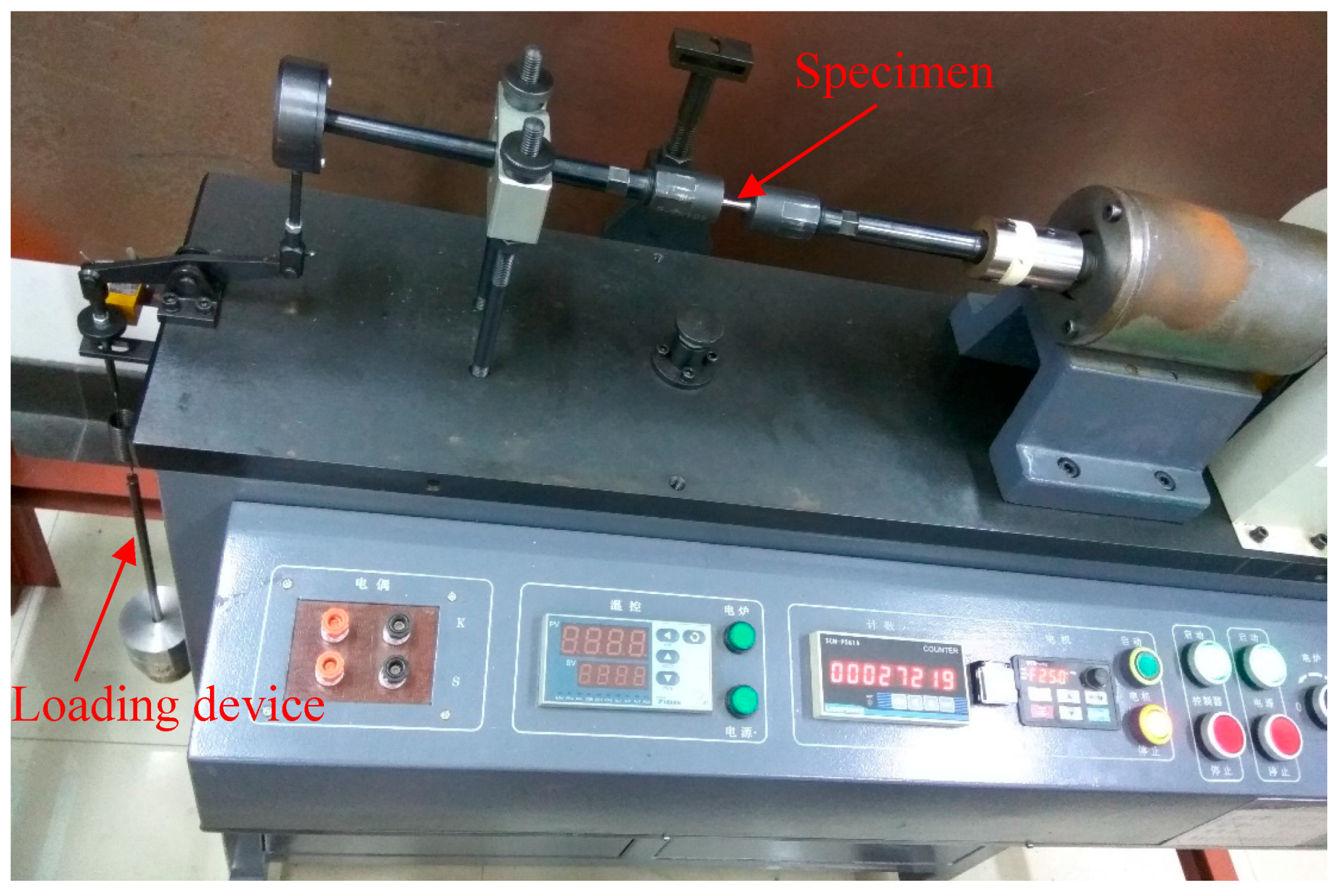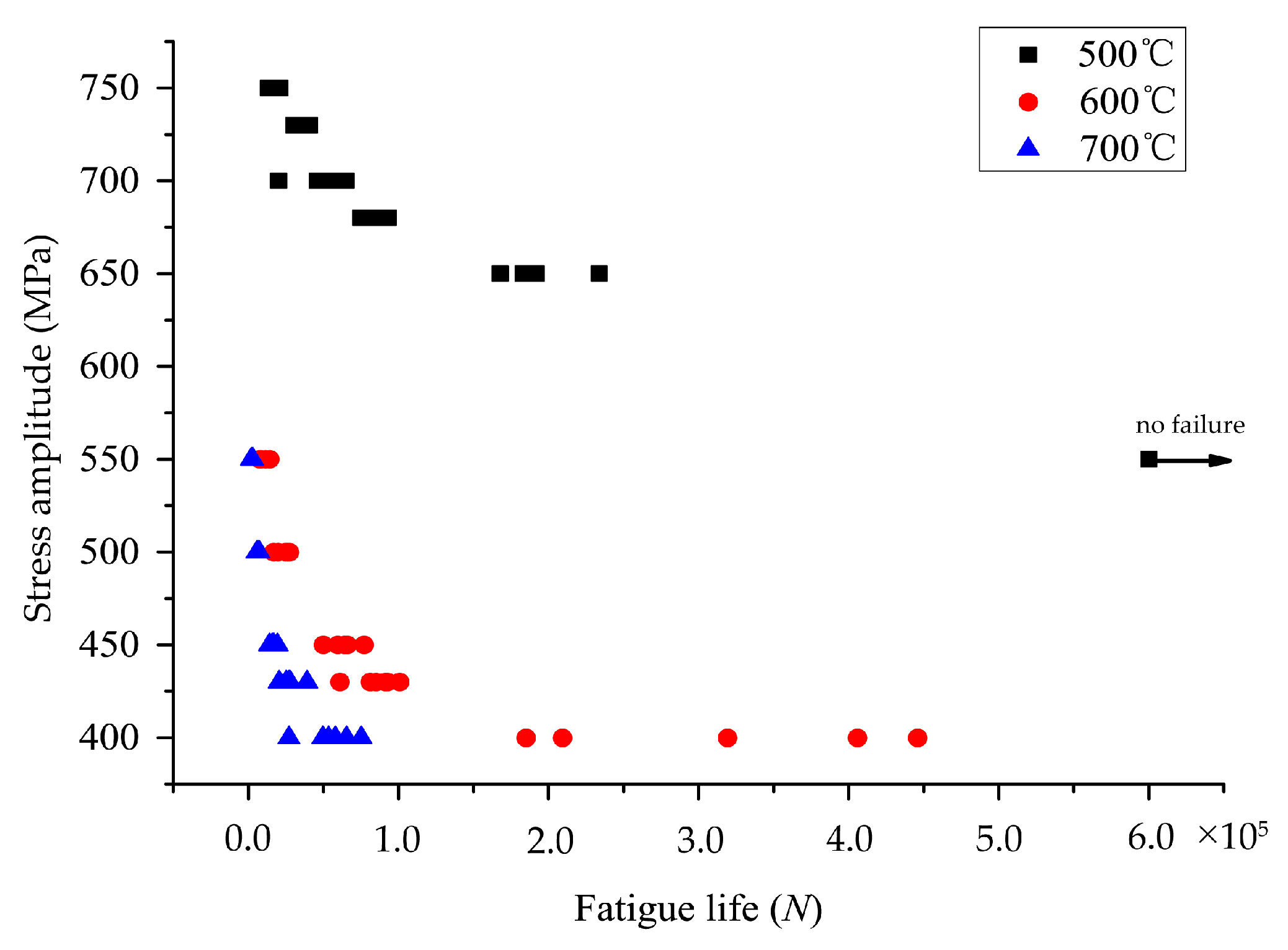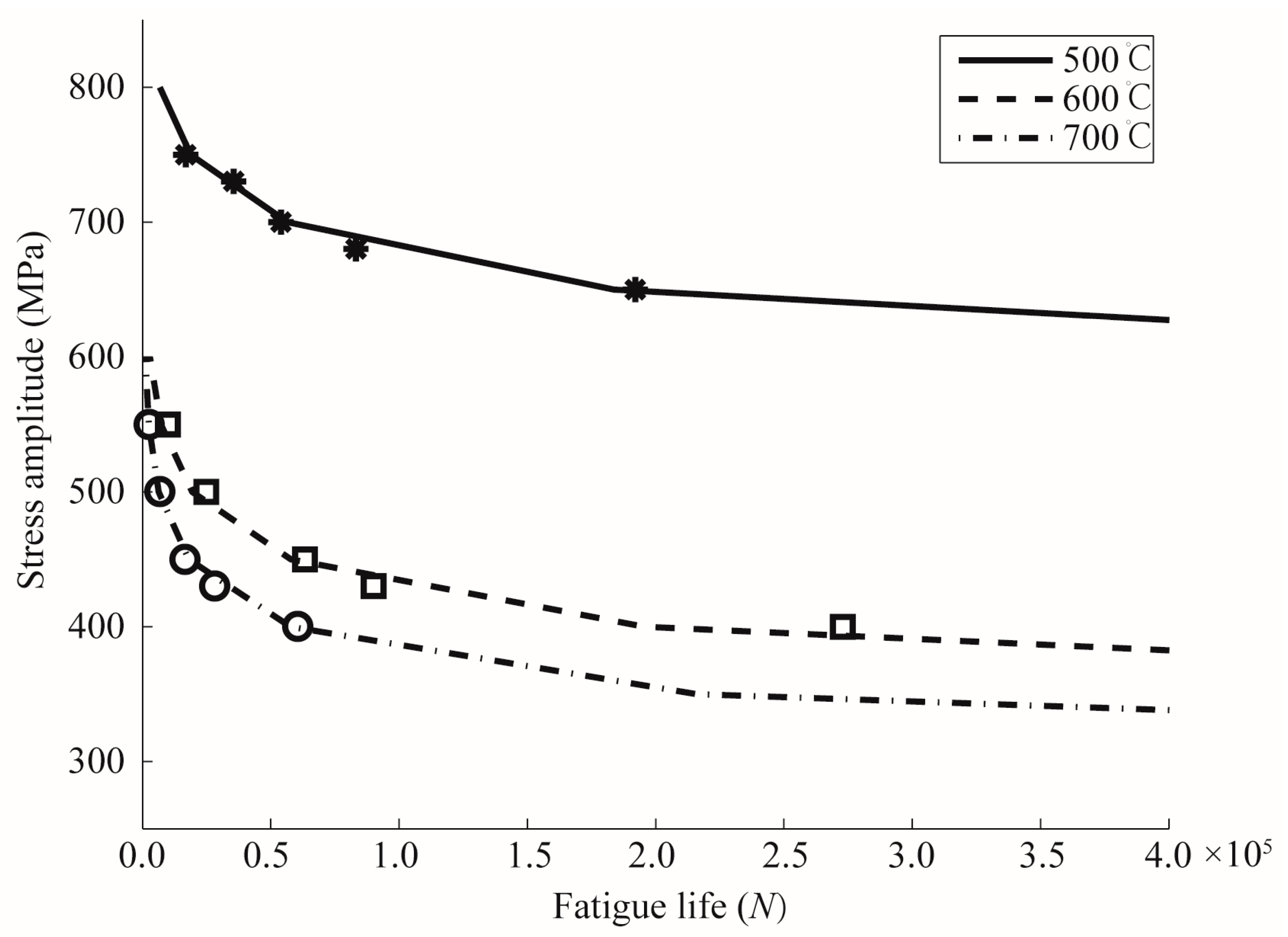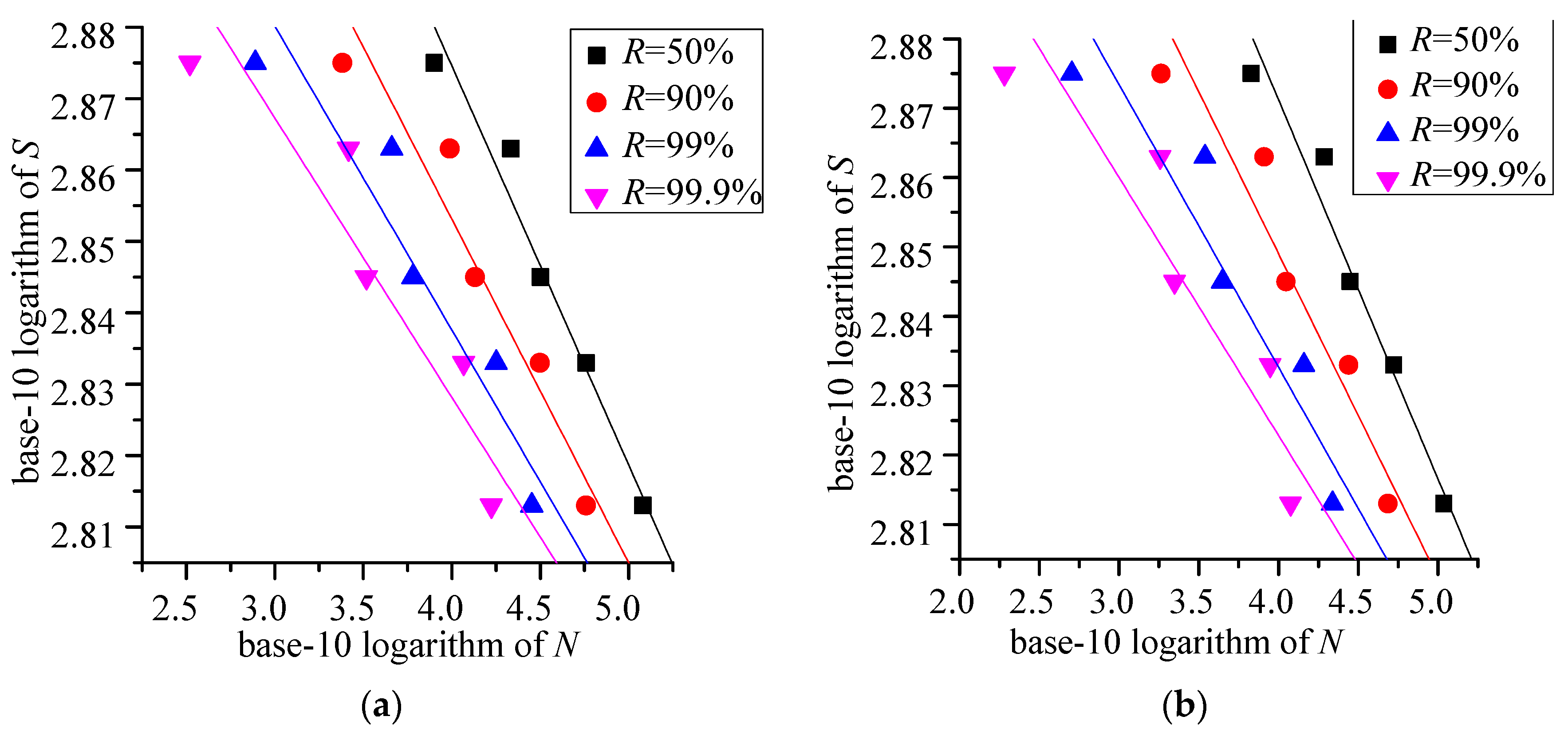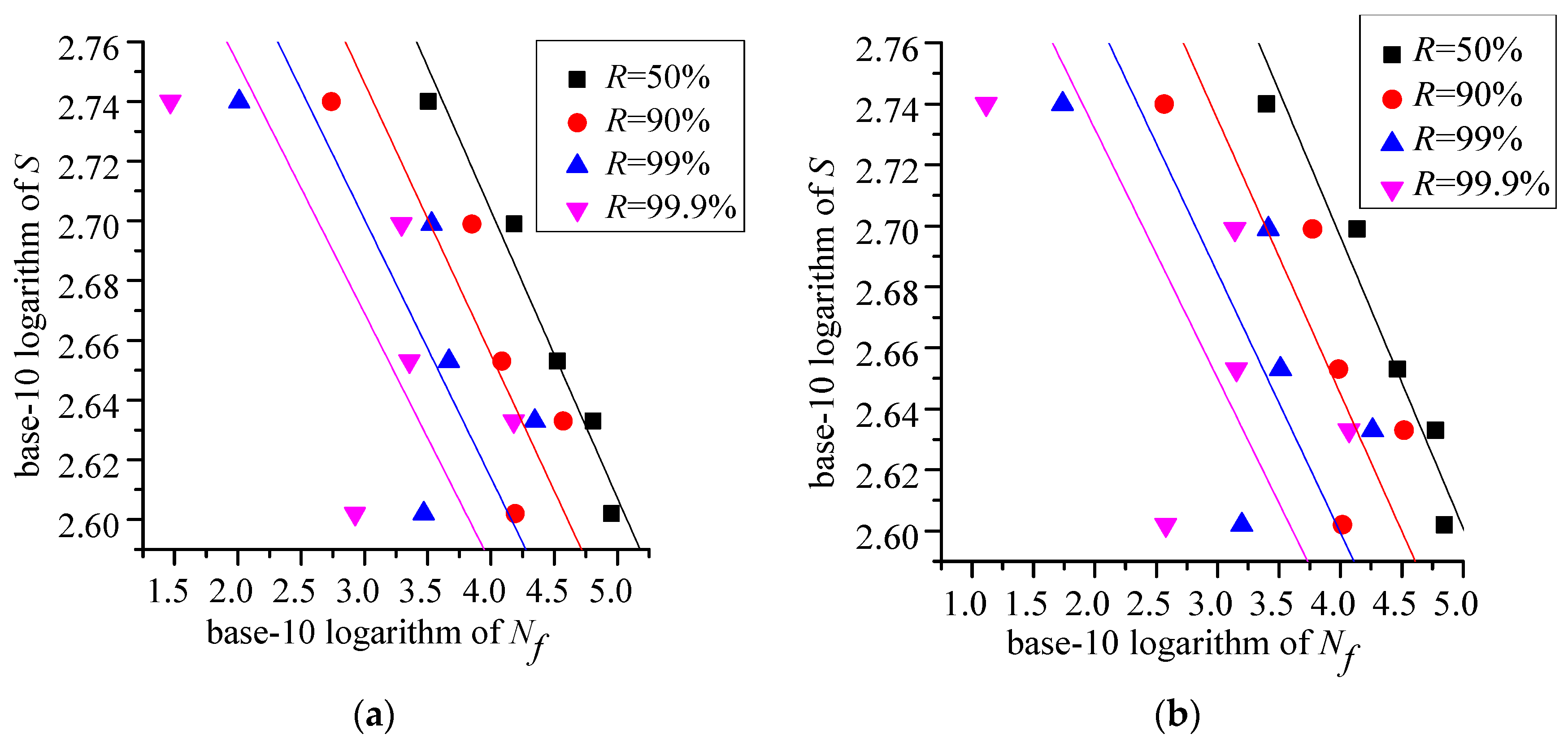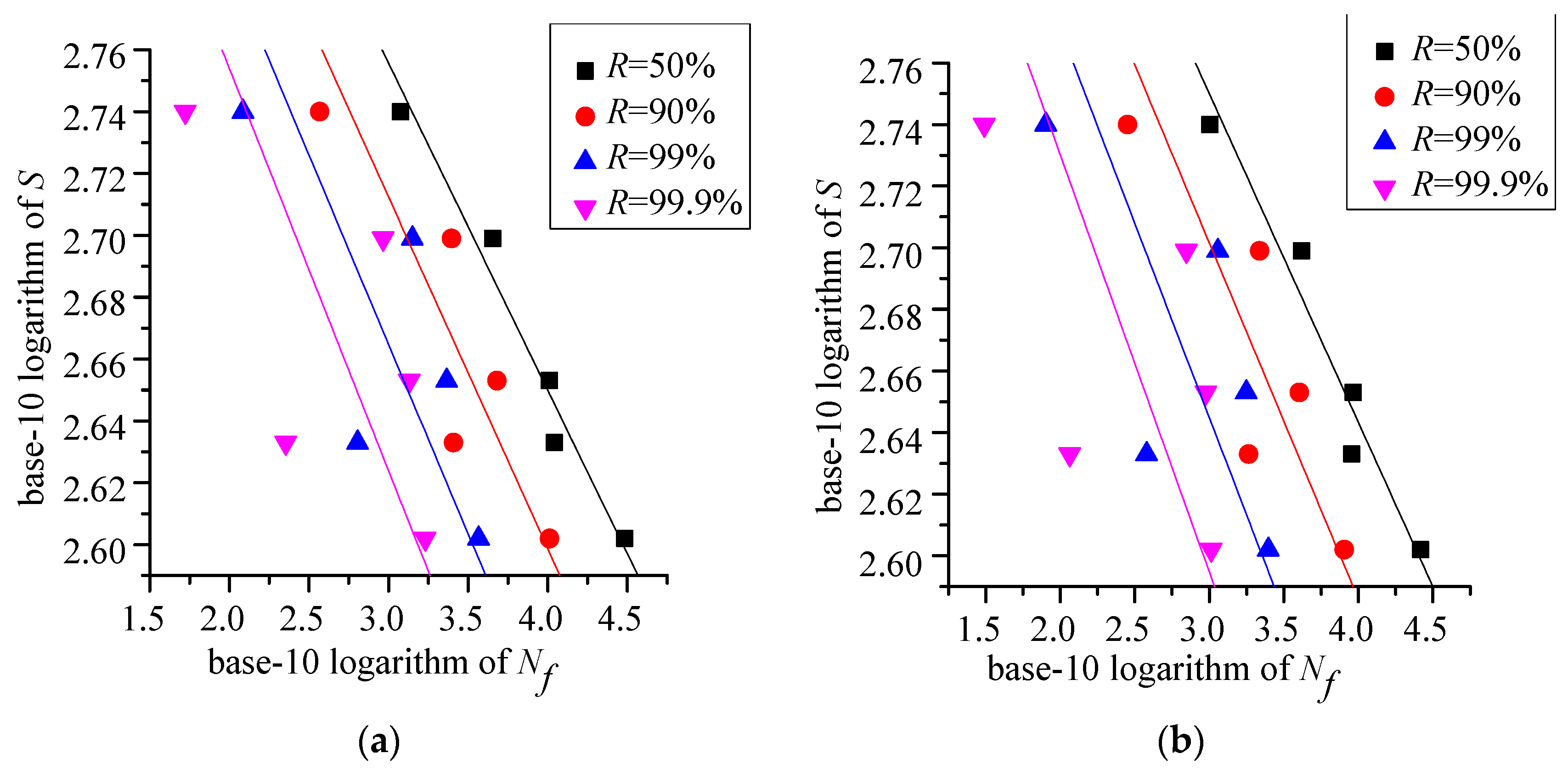Quenched and tempered constructional steel has a higher ratio of yield strength to tensile strength, a higher elongation, a less reduction of area, and a greater impact strength than steel without any heat treatment [
1]. Steel quenching is defined as “cooling of steel workpieces at a rate faster than still air” [
2]. The cooling rate is so fast that austenite is mainly transformed into martensite and bainite [
3]. Mei and Morris’ study [
4] showed that due to the influence of martensite, the fatigue crack growth rate of austenitic stainless steels 304 L was 10 times slower than that of 304 LN in the given condition. It has been reported that microstructure and residual stress relief are affected by tempering temperature in dual phase steels [
5,
6]. Moreover, the fatigue life of structures is mainly dependent on surface roughness, residual stress, and microstructure [
7]. Therefore, it is important to investigate the fatigue property and life estimation of quenched and tempered steel at different tempering temperatures to improve the safety and reliability of the carbon steel in service.
The fatigue properties of quenched and tempered steel have been investigated by some researchers. Murakami et al. [
8] investigated the effects of non-metallic inclusions on the fatigue properties of quenched and tempered 0.46% carbon steel in the range of super-high cycle fatigue life, and proposed an endurance limit prediction method by the
parameter model [
9] with three parameters: the Vickers hardness of the matrix, the square root of the projected area of inclusions, and residual stress. Starke et al. [
10,
11] analyzed the fatigue behavior of quenched and tempered SAE (Society of Automotive Engineers) 4140 steel using three types of data: Stress–strain hysteresis, temperature, and electrical resistance. They proposed a fatigue life calculation method, PHYBAL, using data from only three fatigue tests. Gauland and Duquette [
12] observed significant reductions in the fatigue resistance of quenched and tempered 4130 steel, with fretting cracks that deviated into the alloy becoming initiated fatigue cracks when the specimen was simultaneously subjected to cyclic stress and fretting of the surface.
The effects of tempering temperature on fatigue properties have been reported by some researchers. It was observed by London et al. [
13] that in cantilevered bending fatigue samples, the growth rate of small surface cracks slowed slightly at the same cyclic stress intensity with an increase of the tempering temperature from 200 °C to 700 °C. Moreover, at tempering temperatures of 200 °C and 400 °C, the threshold of cyclic stress intensity for small crack propagation was above that for a long crack; at tempering temperatures of 550 °C and 700 °C, the threshold for small cracks was below corresponding long crack thresholds, with cracks at 700 °C tempering showing the small crack effect. Amirat et al. [
14] showed that for W1.6753 (A high strength alloy steel Werkstoff 1.6753) steel near the threshold of its stress intensity factor, lowering the tempering temperature (500 °C vs. 200 °C) resulted in increased fatigue crack growth at 0.6 Hz and 78 Hz. Similar conclusions were also obtained by Tsay et al. [
15], with fatigue crack growth rates decreasing as the tempering temperature increased from 400 °C to 600 °C for both D6AC steel plates and laser welds. They also showed that the endurance limit was also affected by the tempering temperature.
Opposing conclusions were obtained by Sultan [
16] for carburized steel, where fatigue resistance was increased with an increase in tempering temperature: tested tempering temperatures were 200 °C, 300 °C, and 400 °C. Yu et al. [
17] reported that the endurance limit of center-notched specimens increased as the tempering temperature decreased, and notch sensitivity and absolute notch fatigue strength were not significantly dependent on tempering temperature. Using uniaxial tension–compression fatigue tests of high-strength steel tempered at different tempering temperatures (433 K and 573 K), Oguma and Nakamura [
18] found: (1) In the 10
4–10
5 cycle range, the endurance limit for both tempering conditions was proportional to the Vickers hardness
; (2) In the 10
5–10
8 cycle range, the material tempered at a lower temperature showed a lower endurance limit. In Reference [
19], the results of fatigue tests of high-strength spring steel showed that the highest endurance limit, ductility, and toughness were achieved when the tempering temperature was 450 °C. For the experiment, the material was austenized at 900 °C for 40 min and quenched in oil, and then tempered for 30 min at temperatures of 300 °C, 350 °C, 400 °C, 450 °C, and 500 °C. Another report [
20] found that material tempered at 250 °C exhibited superior fatigue properties in short life regions when steel was heated up to 950 °C for 5 min and quenched using water. Tempering treatments at temperatures of 100 °C, 250 °C, and 340 °C were performed for 30 min and followed by air cooling. The effects of tempering temperature on 4300 sintered steel have been investigated by Williams et al. [
21], who found that an increase in tempering temperature of 54% resulted in a 2% increase in the endurance limit when specimens were tempered for one hour in air at either 205 °C or 315 °C. The experimental results of Siddiqui et al. [
22] showed an initial increase in the number of cycles to fail when tempering was changed from 100 °C to 200 °C for 30 min, but that further increase in tempering time and temperature reduced the resistance to fatigue failure. It was also seen by Anctil and Kula [
23] that the crack growth rates of 4340 steel decreased as the tempering temperature increased to 600 F, and then increased again with higher tempering temperatures.
For this work, the statistical properties of the fatigue life for quenched and tempered 0.44% carbon steel are analyzed and the fatigue life is estimated. The specimens were austenized at 900 °C and quenched in water, and subsequently tempered at different tempering temperatures. The chemical composition of the material, specimen geometry, and the testing machine are described, and the mechanical properties of specimens tempered at different tempering temperatures are shown in
Section 2. S–N curves, P–S–N curves, and their estimated parameters are presented in
Section 3. In
Section 4, two methods for estimating the mean fatigue life of quenched and tempered 0.44% carbon steel are presented: One is based on dislocation dipole accumulation and Paris’ law, and the other is based on the kriging model. Finally, conclusions are drawn.
